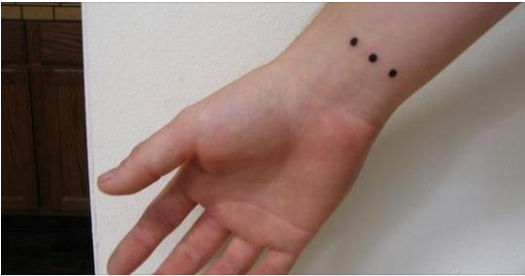The three-dot tattoo is a symbol that has been shrouded in mystery for centuries. This enigmatic design has been associated with various meanings, ranging from secrecy and silence to loyalty and rebellion. In this article, we will delve into the history and symbolism of the three-dot tattoo, exploring its significance in different contexts.
The three-dot tattoo is often linked to the Buddhist concept of the three wise monkeys, who see no evil, hear no evil, and speak no evil. This symbolism suggests that individuals with this tattoo prefer to keep their personal lives private and are committed to maintaining secrecy. However, this interpretation is not the only one, as the three-dot tattoo can also represent the length of a person’s prison sentence.
In the prison system, tattoos are often used as a form of communication and identification. The three-dot tattoo, in particular, is believed to signify a person’s status as a serious offender. Each dot is thought to represent ten years of imprisonment, with additional dots being added for longer sentences. This tattoo serves as a permanent reminder of a person’s past experiences and the challenges they have faced.
Despite its association with criminality, the three-dot tattoo can also be individually interpreted. Some people choose this tattoo for aesthetic reasons or to express their rebellious nature. For them, it is a symbol of personal identity and self-expression. However, it is essential to acknowledge that this tattoo can also be perceived as a stigma, leading to prejudice and discrimination against individuals who wear it.
The three-dot tattoo is a complex symbol with multiple meanings and interpretations. While it is often associated with secrecy, loyalty, and rebellion, it can also serve as a reminder of a person’s past experiences and the challenges they have faced. As we navigate the intricacies of this symbol, it is crucial to approach it with empathy and understanding, recognizing that each person’s story is unique and multifaceted.


